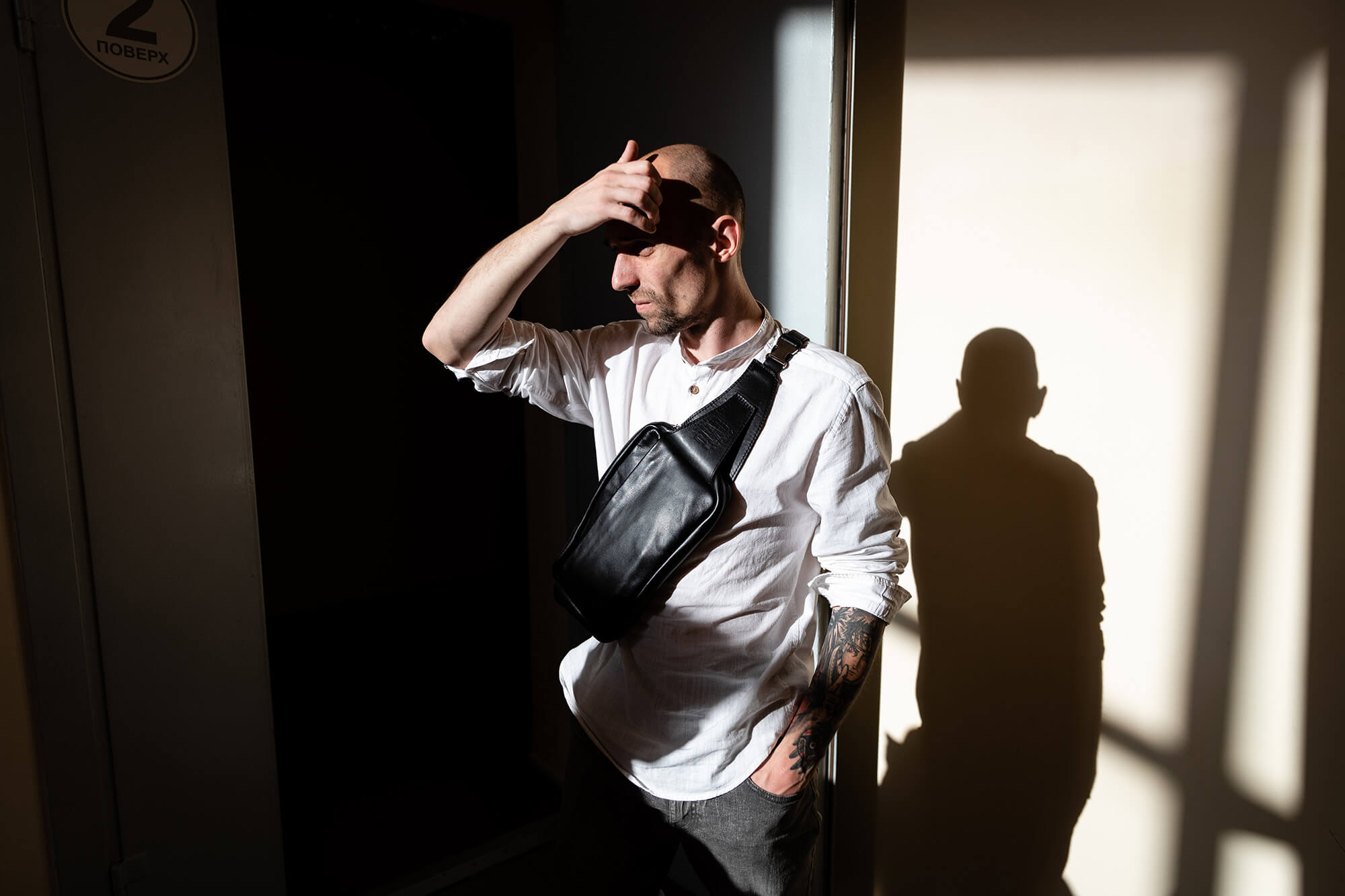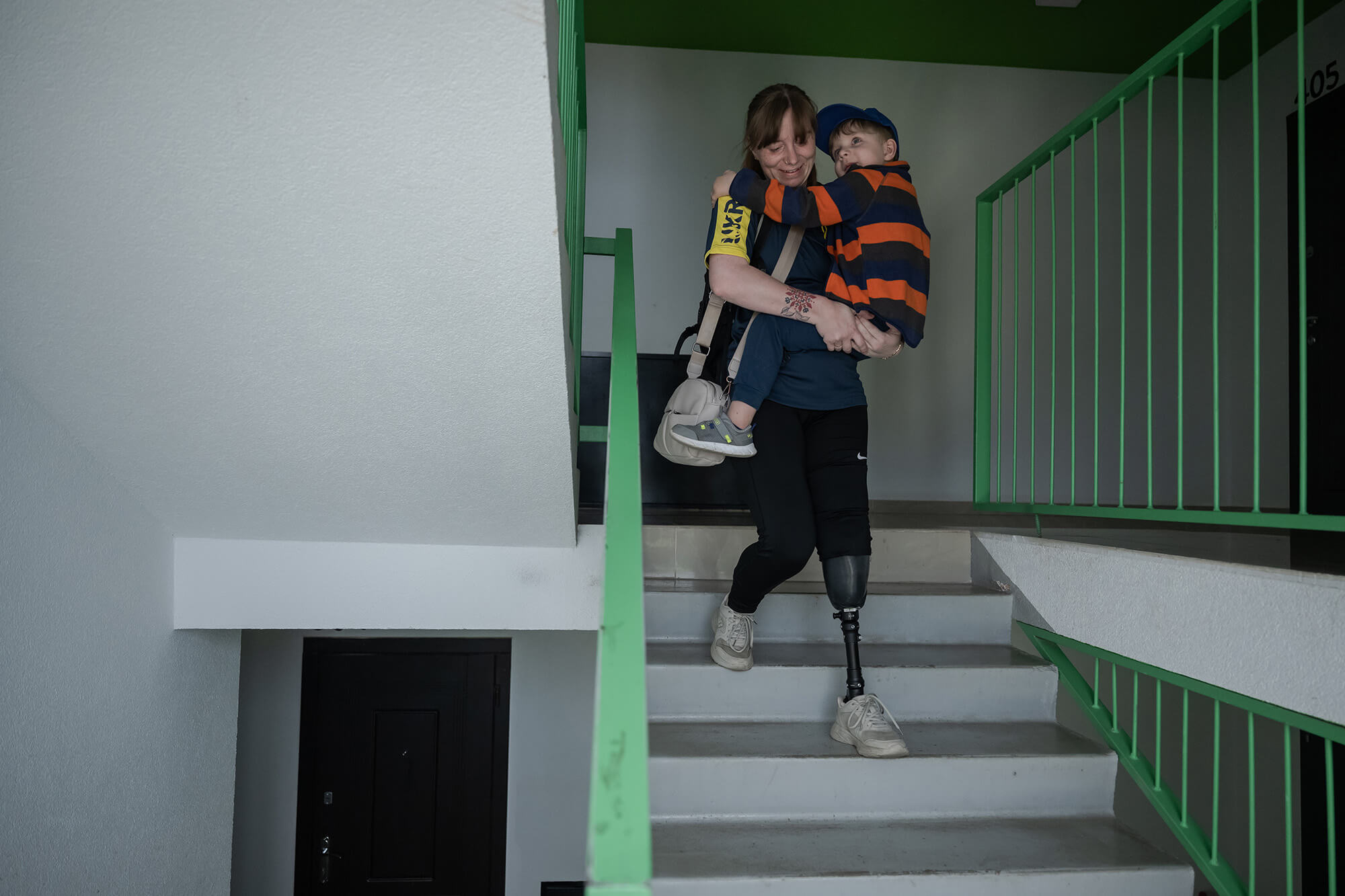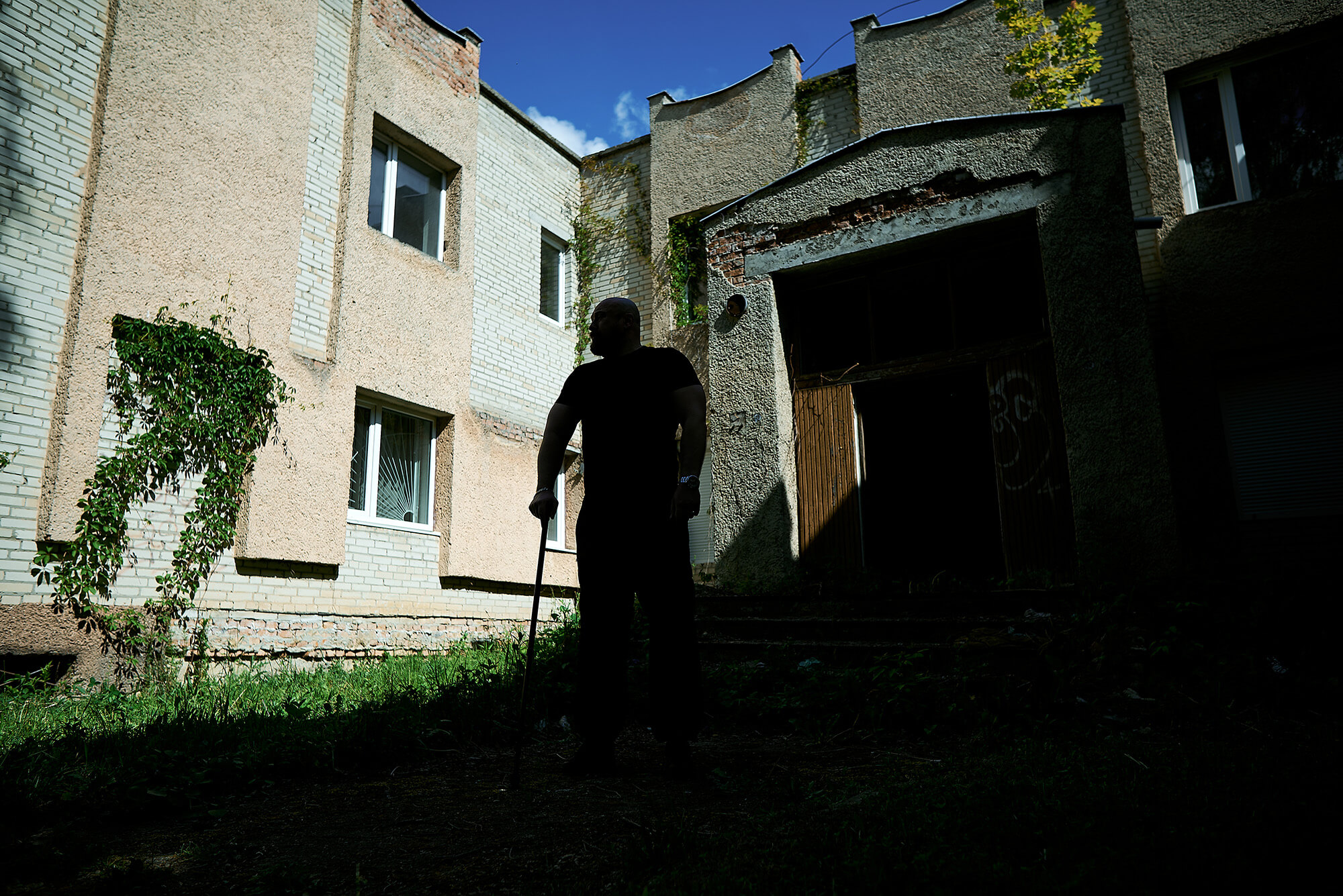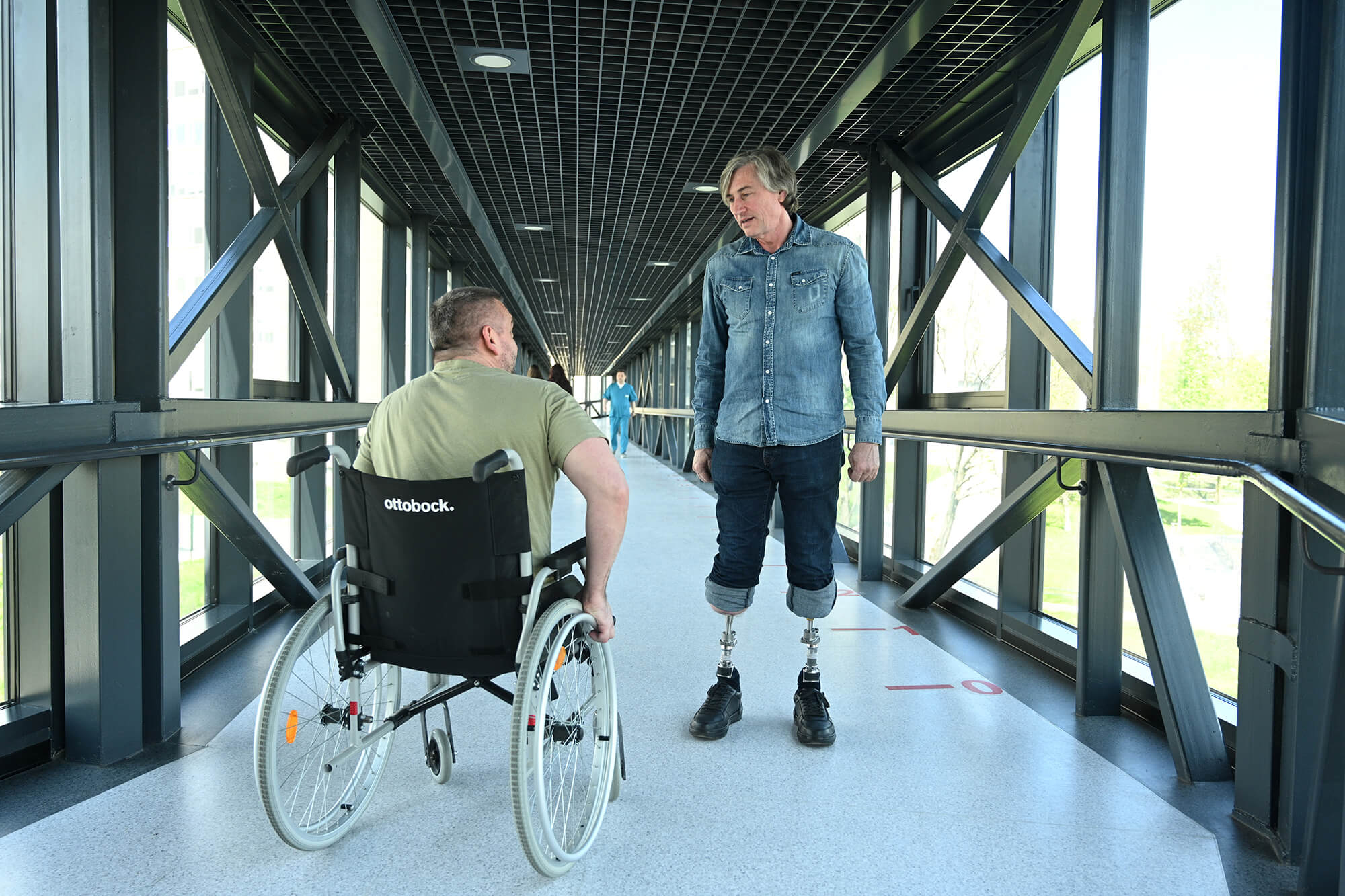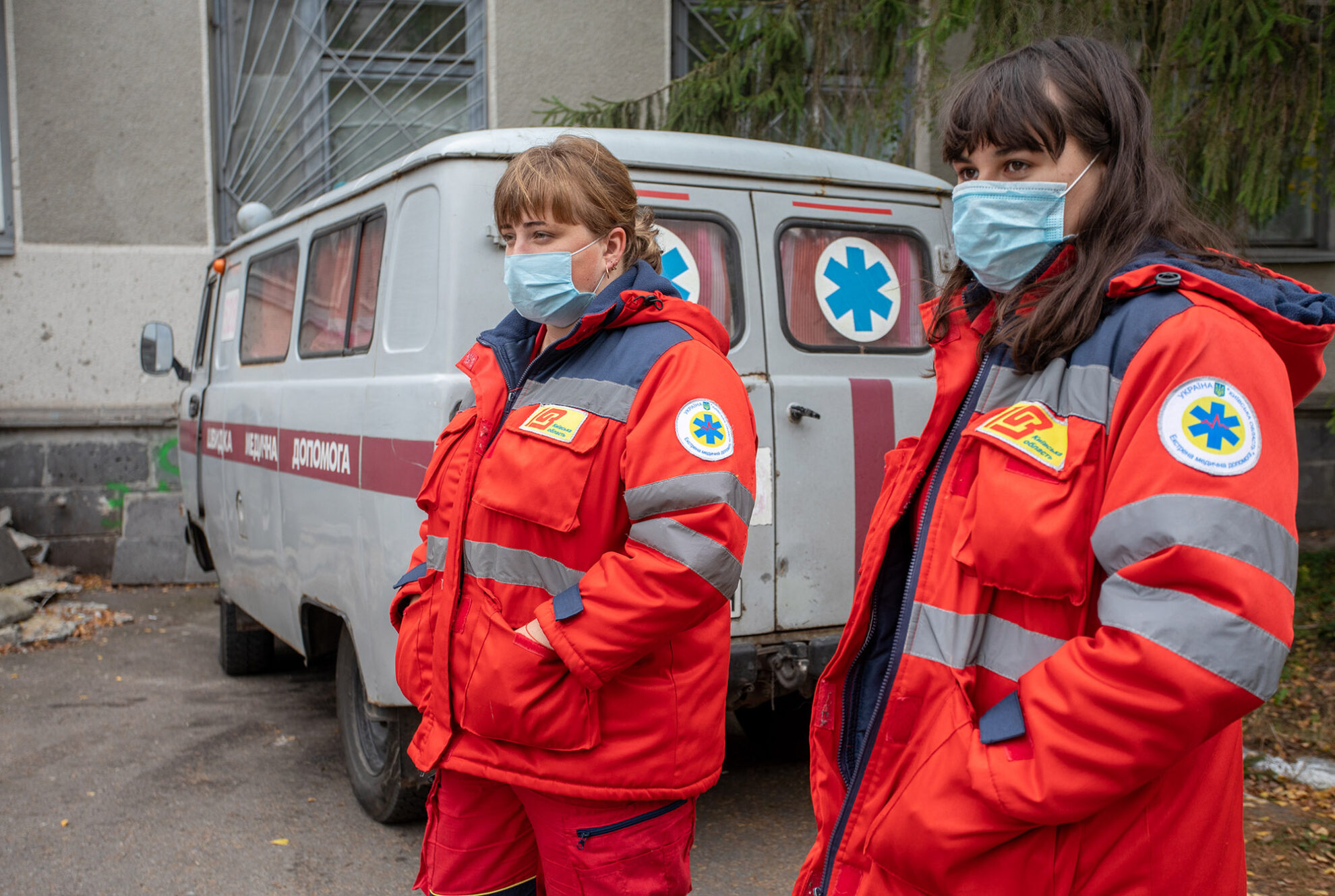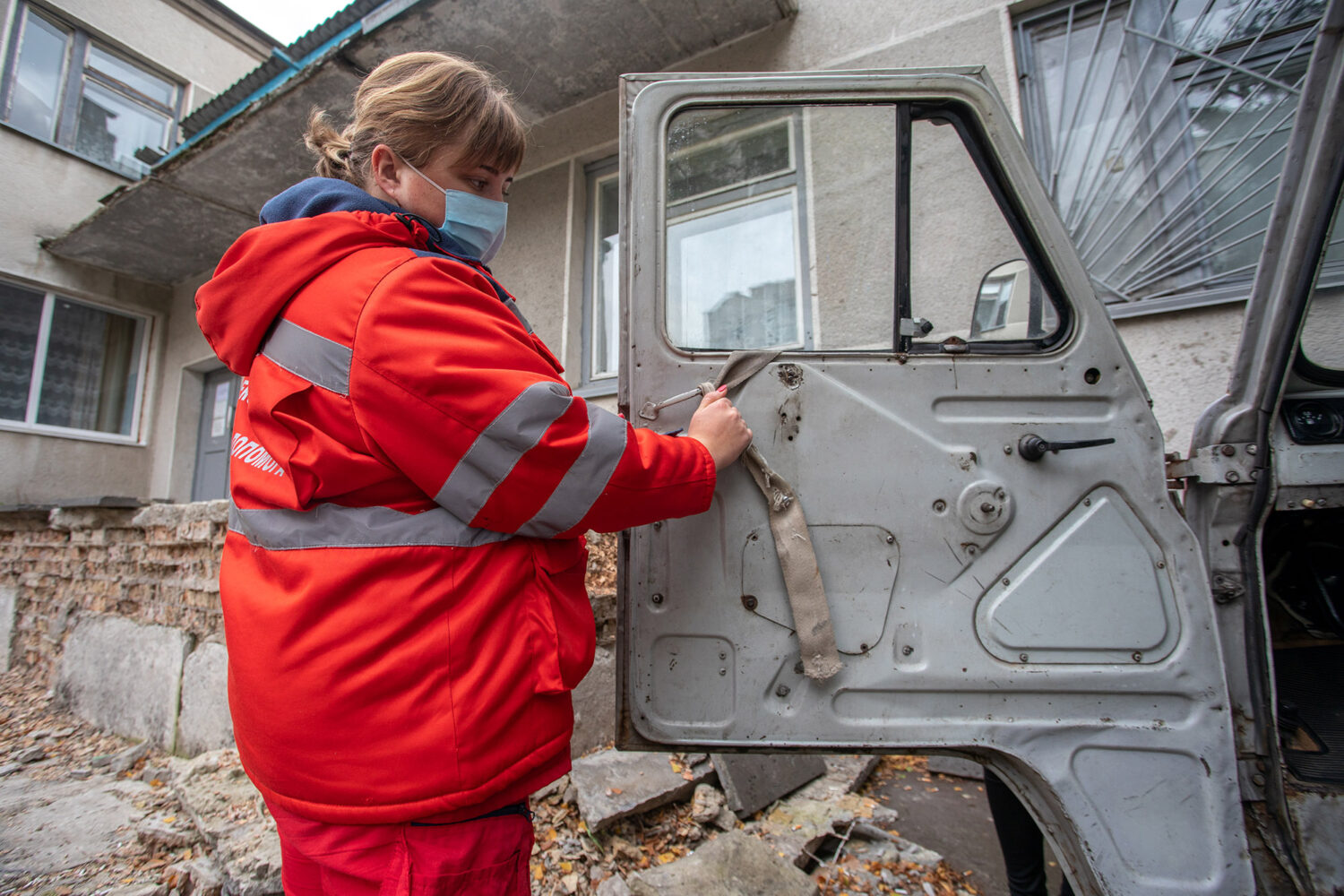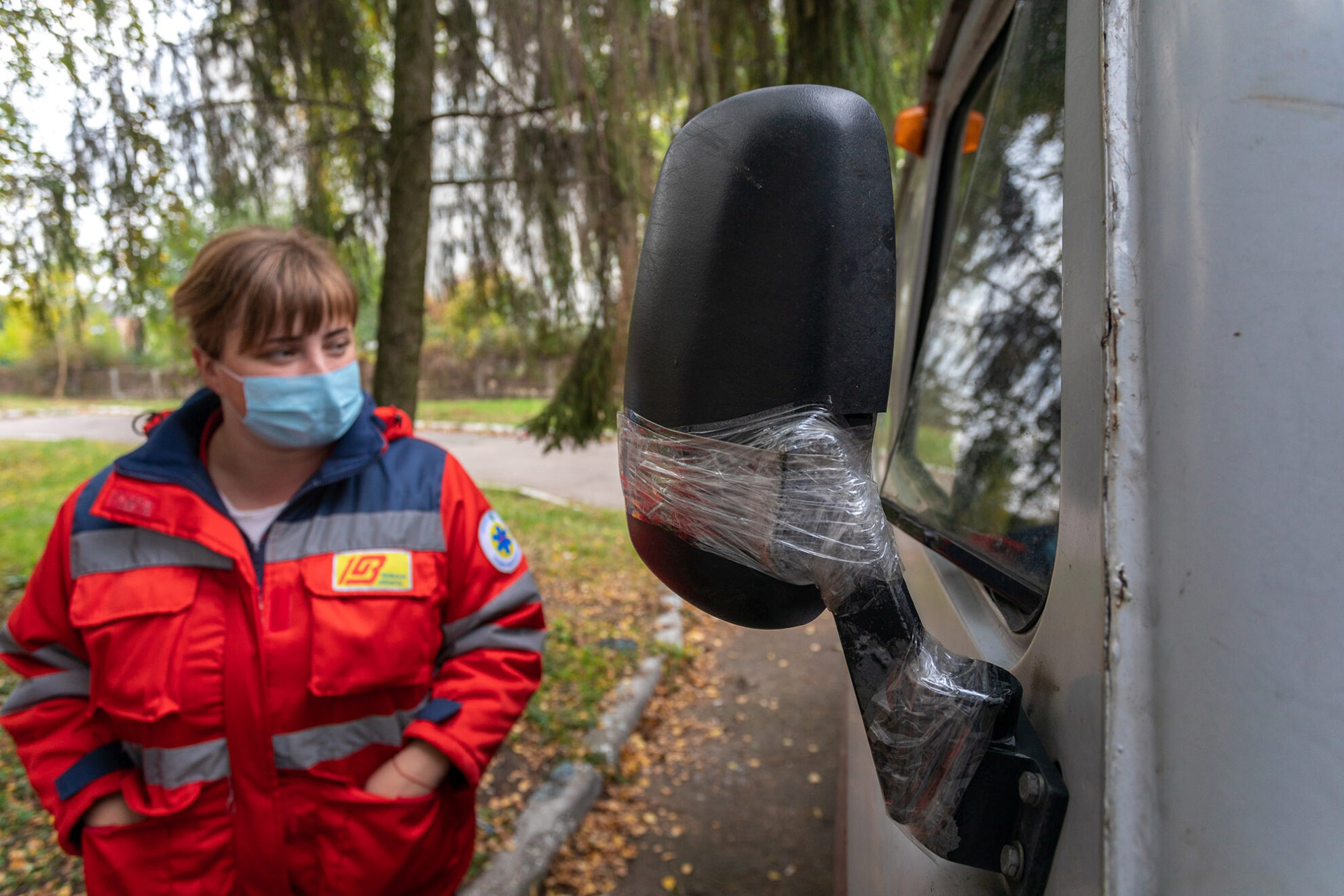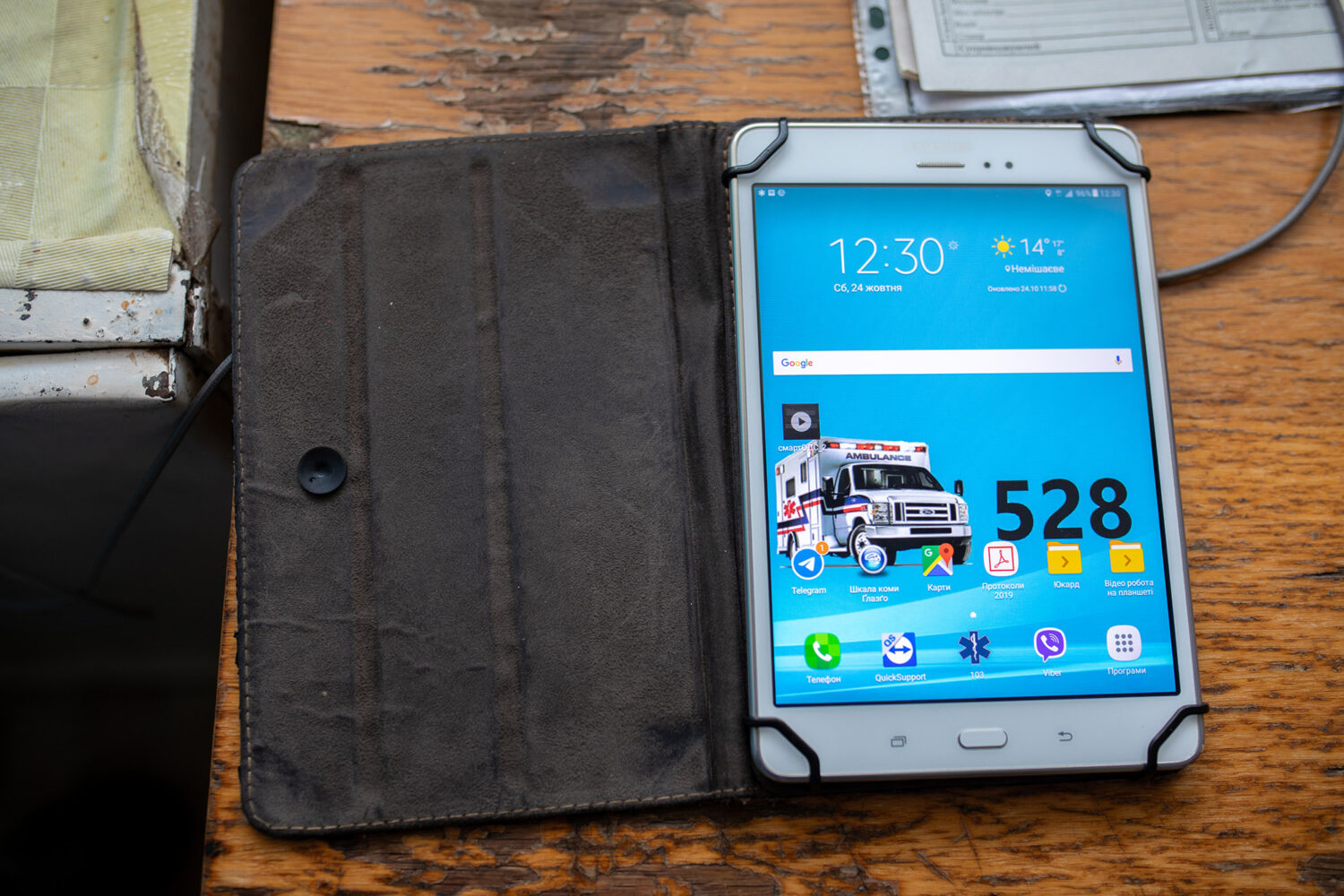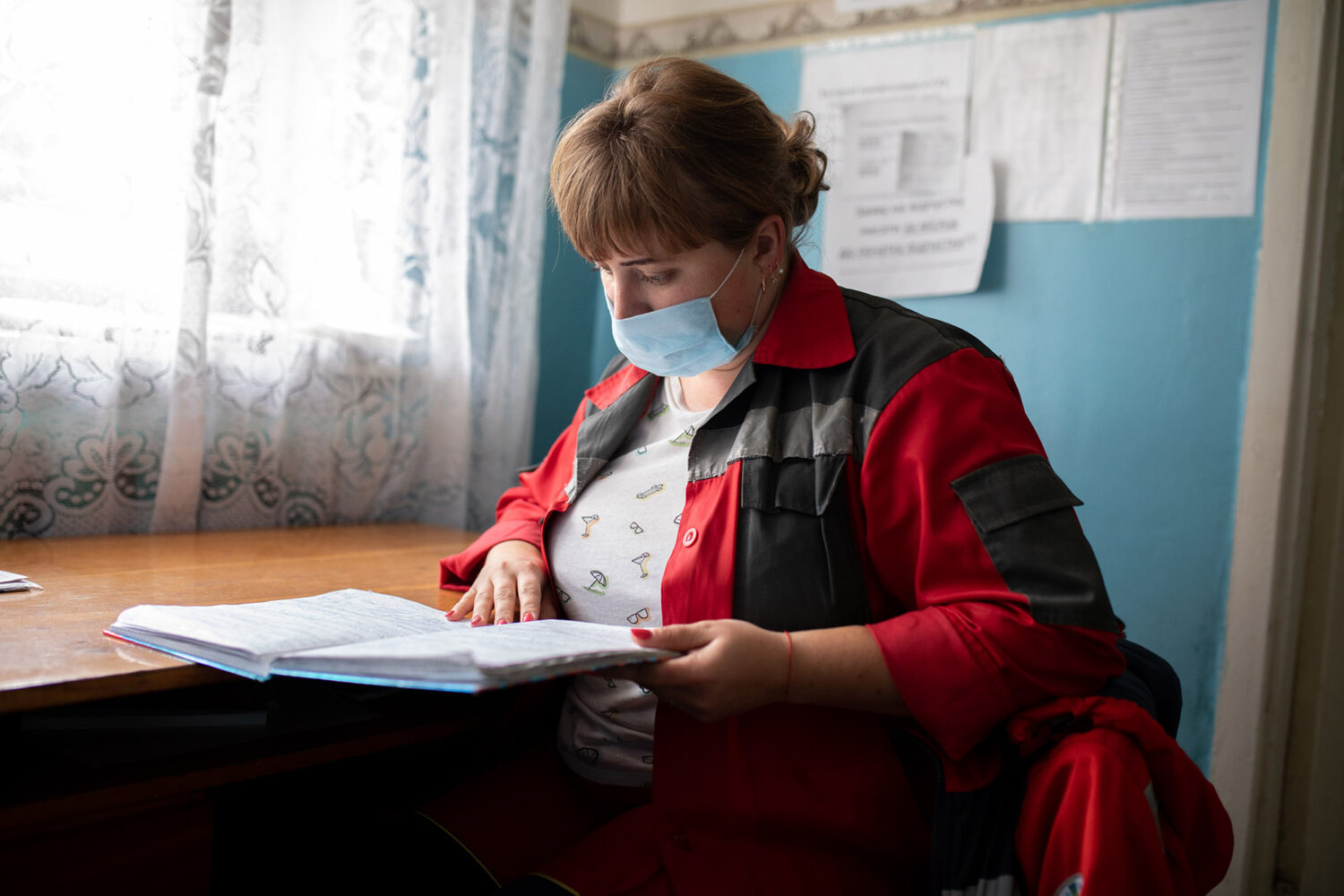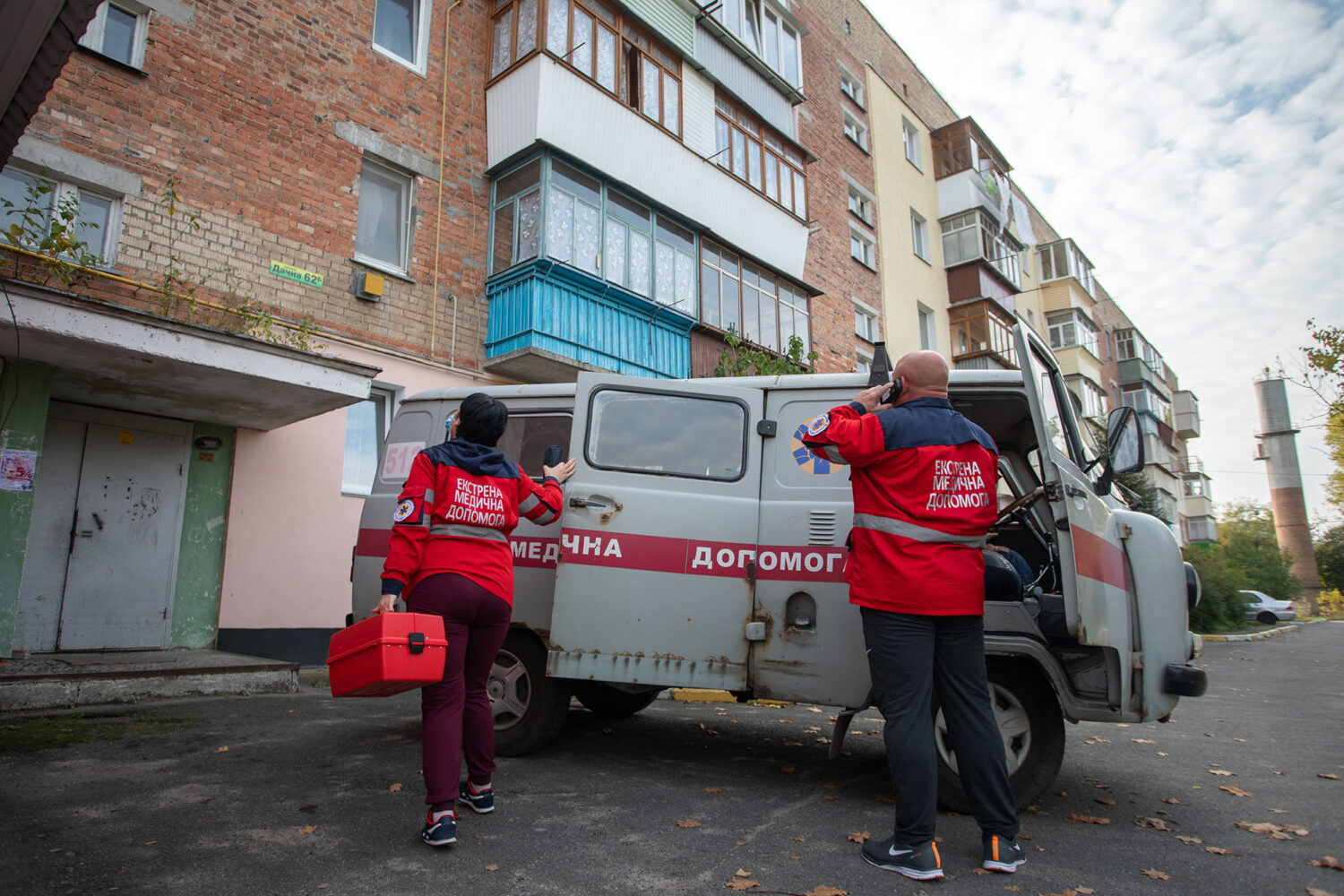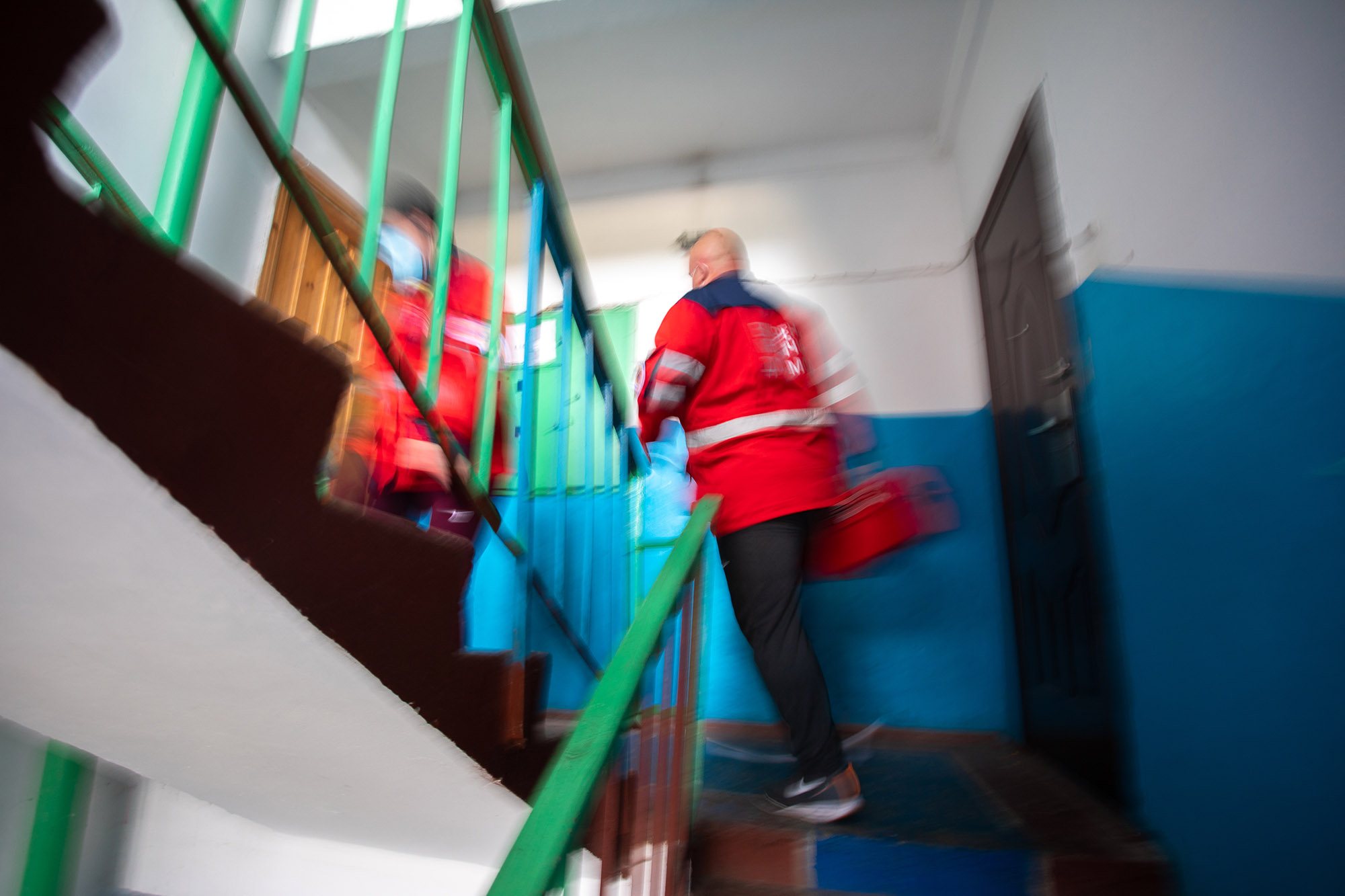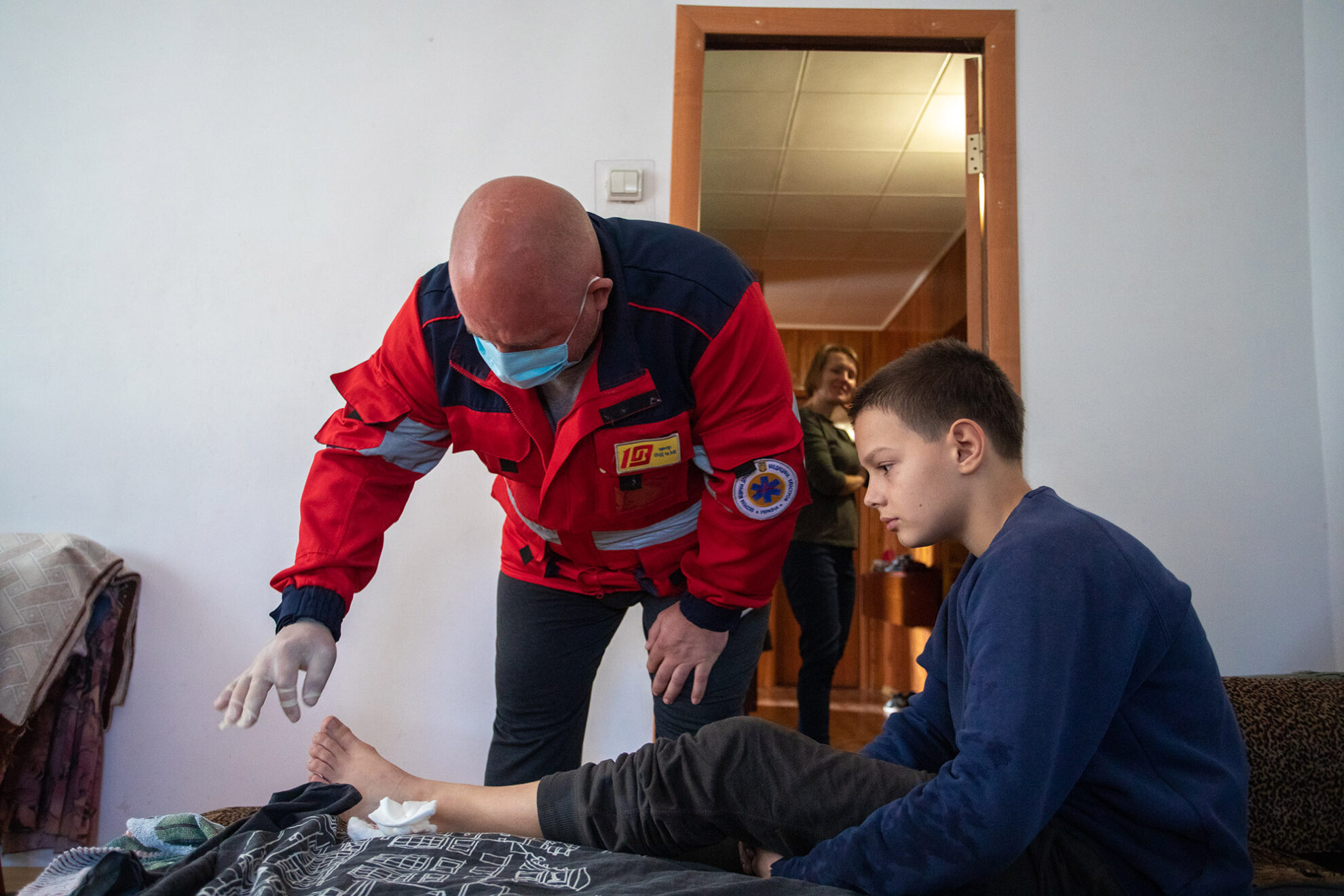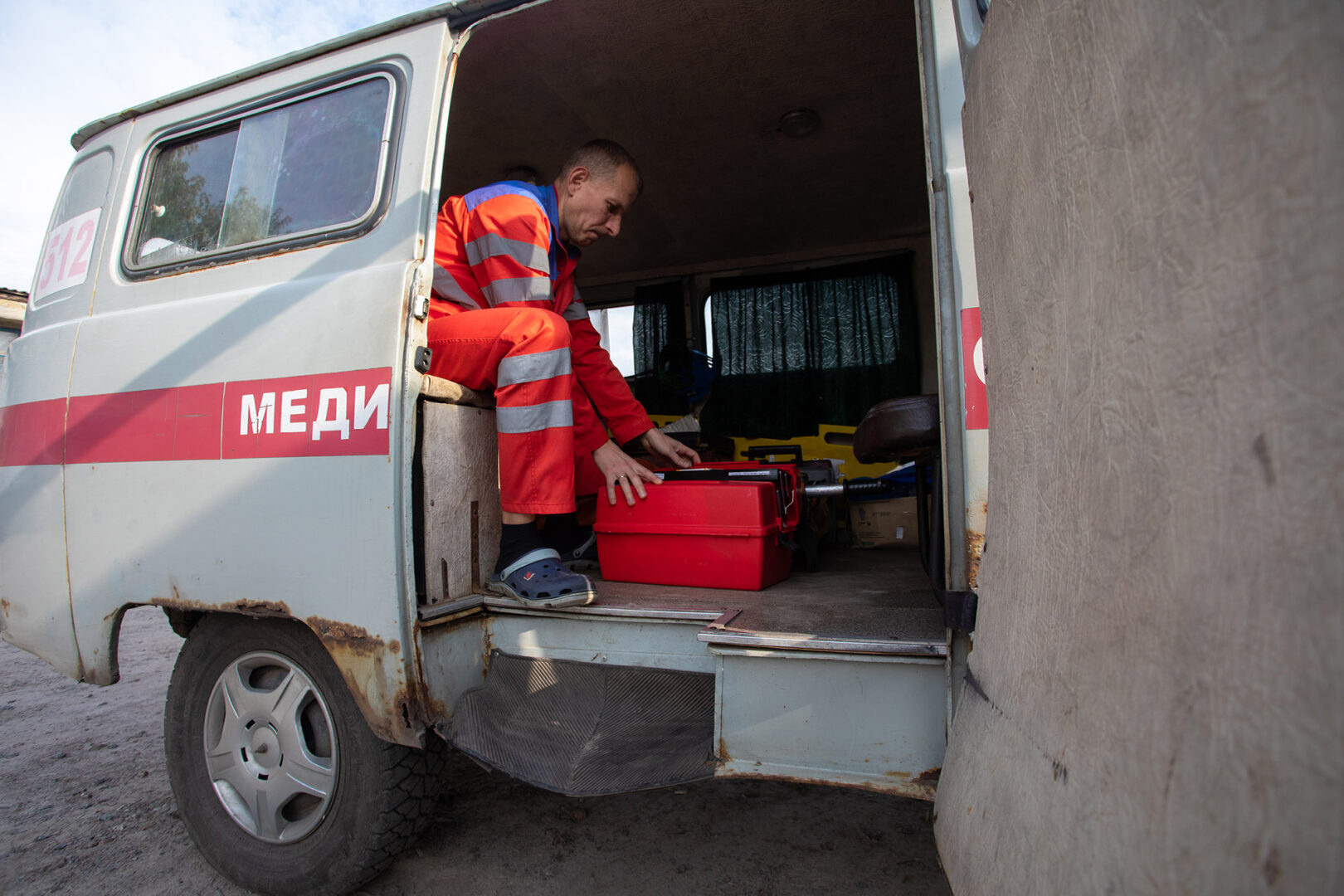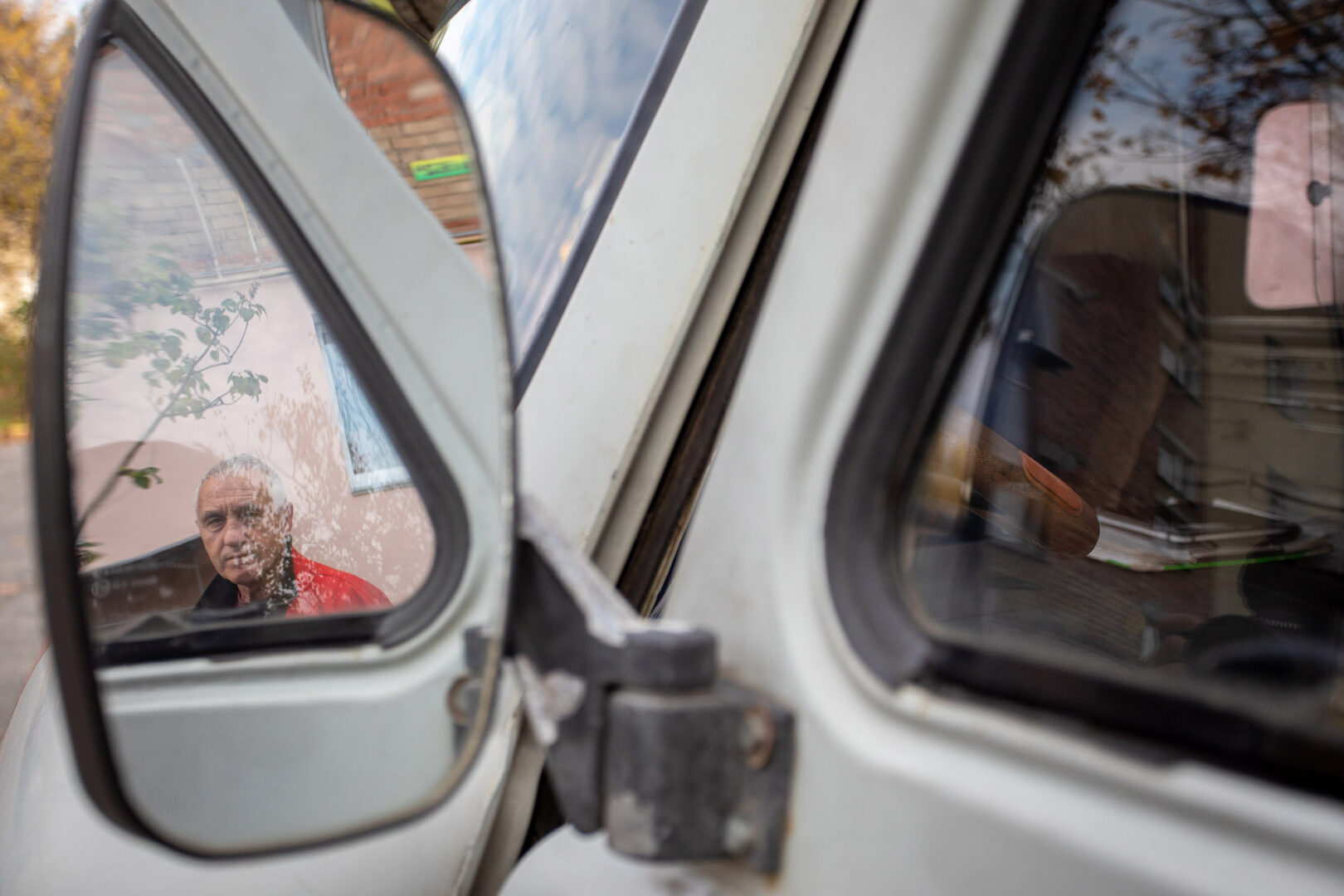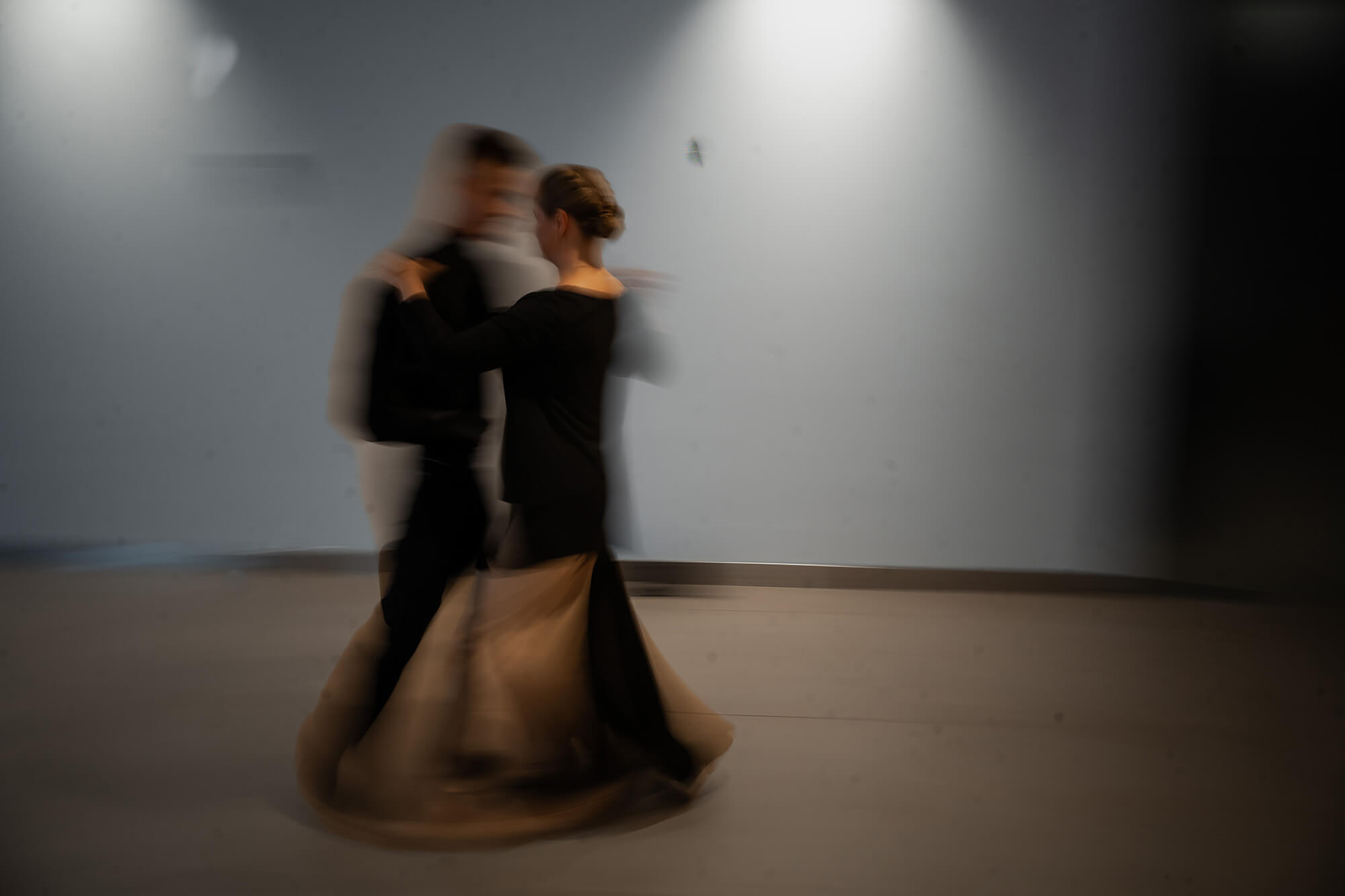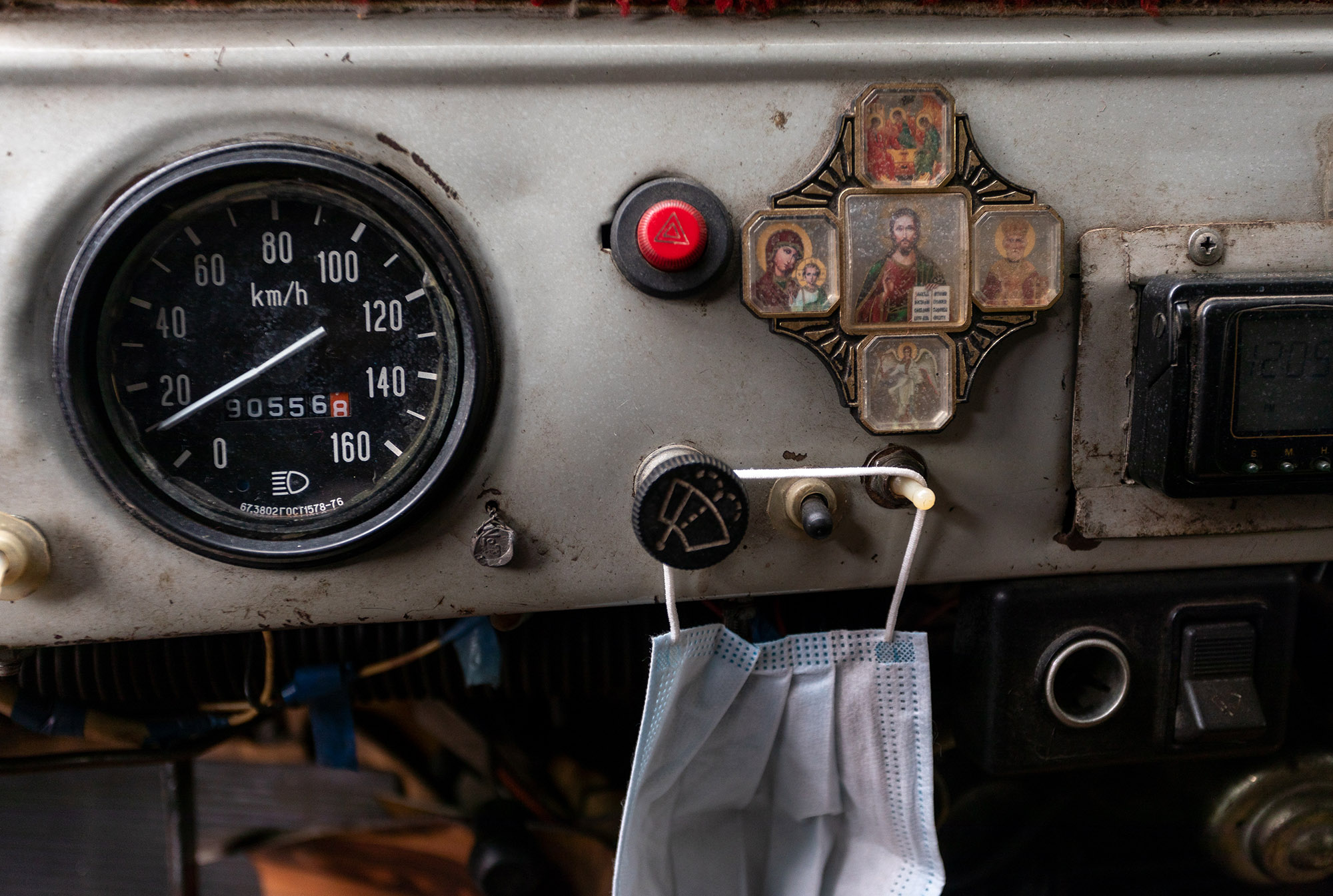
Comin’ in on a Wing and a Prayer
It’s impossible to mistake their shrill sirens for anything else. They are easily noticed. Although loud, they mostly “keep quiet” about their own troubles. And they stubbornly rush to their patients—“with their one motor gone, they can still carry on”, without equipment, oxygen, and essential drugs. To run an investigation into the quality of Emergency Medical Services provided in rural areas, we went to Kyiv region, where one could expect things to be at least not the worst in the country. The head of the trade union for the local doctors immediately agreed: “Come and see yourself.”
In a small town located in Kyiv region, a young man who fainted right in the middle of the street is surrounded by a crowd of passers-by. An elderly woman is hurriedly rummaging her bag to find some heart pills to put under the tongue. Recalling some health and safety training lessons, a chunky, short-winded man is performing a heart massage, occasionally checking if the young man is breathing. “Ambulance, call an ambulance!”, a girl sitting on the roadside barely says, gasping out tears. She is probably his girlfriend. Several people are dialing 103 all at the same time.
“There is a man feeling unwell. Unconscious, in the street. He doesn’t seem to be breathing.”
“Wait for the emergency team.”
In a quarter-hour, an ambulance arrives from around the corner. The 16-year-old “GAZelle” is solemnly roaring.
“I think he suffers from diabetes. . . Save him, please,” the girl from the roadside begs the paramedics.
“Unfortunately, we can’t take a blood sugar test. We have no glucometers. He is in ventricular fibrillation. Take out our defibrillator,” a paramedic says to another one, looking at the cardiogram.
“I don’t want to go to jail. Do you remember that we have been forbid to use it? It was said to be able to kill someone.”
“Then get me something to reset his heart! Hurry!”
“We don’t have anything. I asked for some stuff, but it was out of stock again. . .”
“Take out the stretcher!”
The stretcher has all the chances to star in a World War II movie. While the patient is being loaded into the ambulance, the crowd is getting vocal: “What kind of ambulance is that? You have nothing at all?!” A young lady is making a selfie for Instagram next to the “vintage car”. She would later write in her post: “Never thought this thing could even drive.”
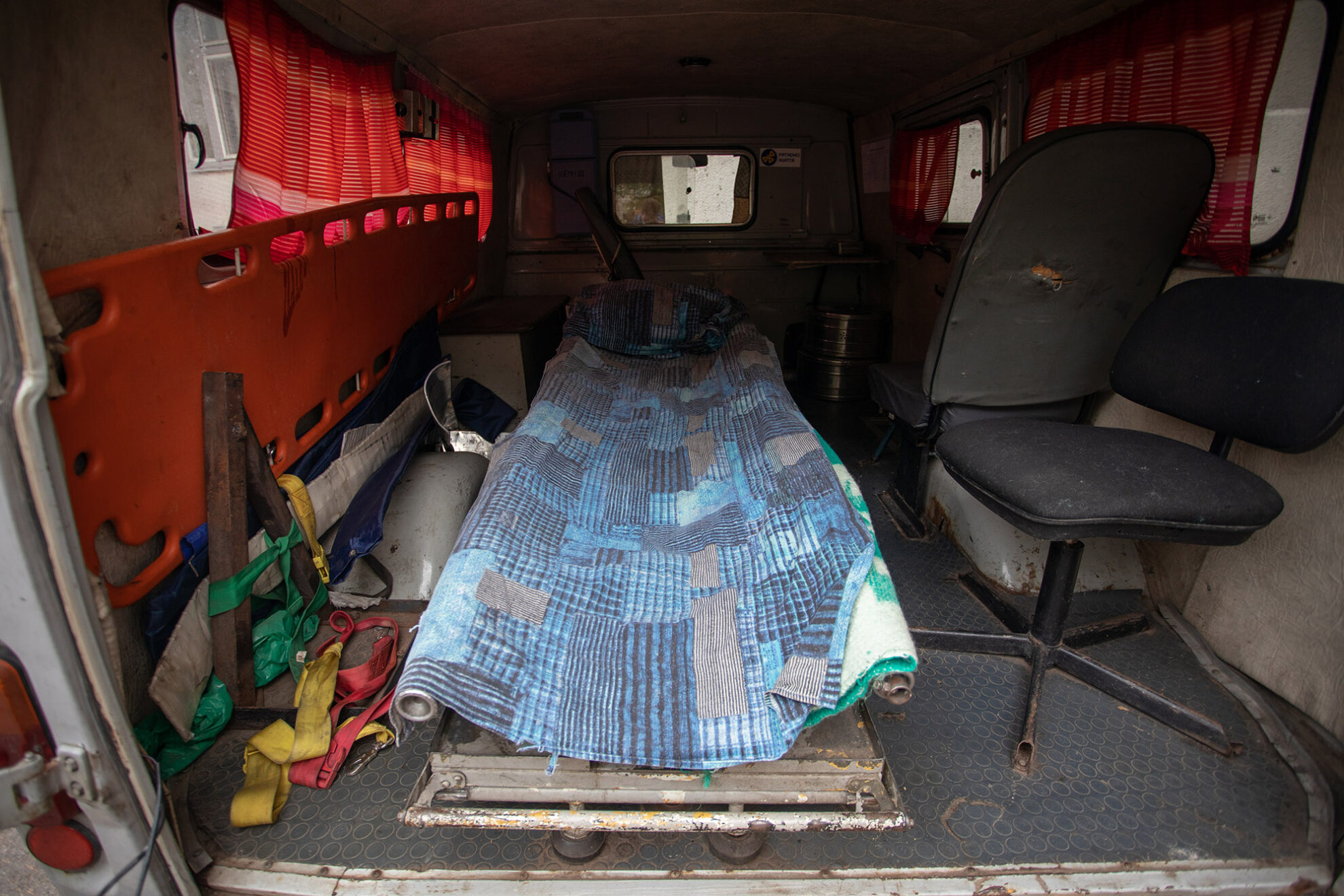
The “thing” which can drive is called “Kyiv Regional Emergency Medical Care.” For the next half an hour in the rusty ambulance, a paramedic would check the boy’s wrist with one hand, while holding an intravenous dropper under the ceiling with another—there is no place to get the intravenous system attached to in the cabin. The patient’s girlfriend would try holding down the loose stretchers with her beloved, also holding the doors so that they don’t swing open at turns.
Her boyfriend will make it.
Unless the ambulance breaks down on the way. And they stall amidst the fields.
Sometimes it happens.
Shamraivka
“And what if we failed to deliver him in time? How would I look her in the eye?” Valerii Korzun pensively says. He is a paramedic of the emergency medical team working at the permanent first aid station in Shamraivka village, Skvyrskyi district. He devoted three-and-a half-decades of his life to the emergency service. “The story you have just heard about a guy who suddenly felt unwell in the street is a made-up case from my experience, so that you understand what the emergency care service was reduced to.”
Valerii is a strong man, in his sixties, with steel piercing eyes. He came to the station to see the journalists on his day off. For he can no longer keep working in such conditions, he says. Smoking one cigarette after another, he shows us a video on his phone displaying how his team got recently stuck right in the middle of the road. A spring broke in their GAZelle.
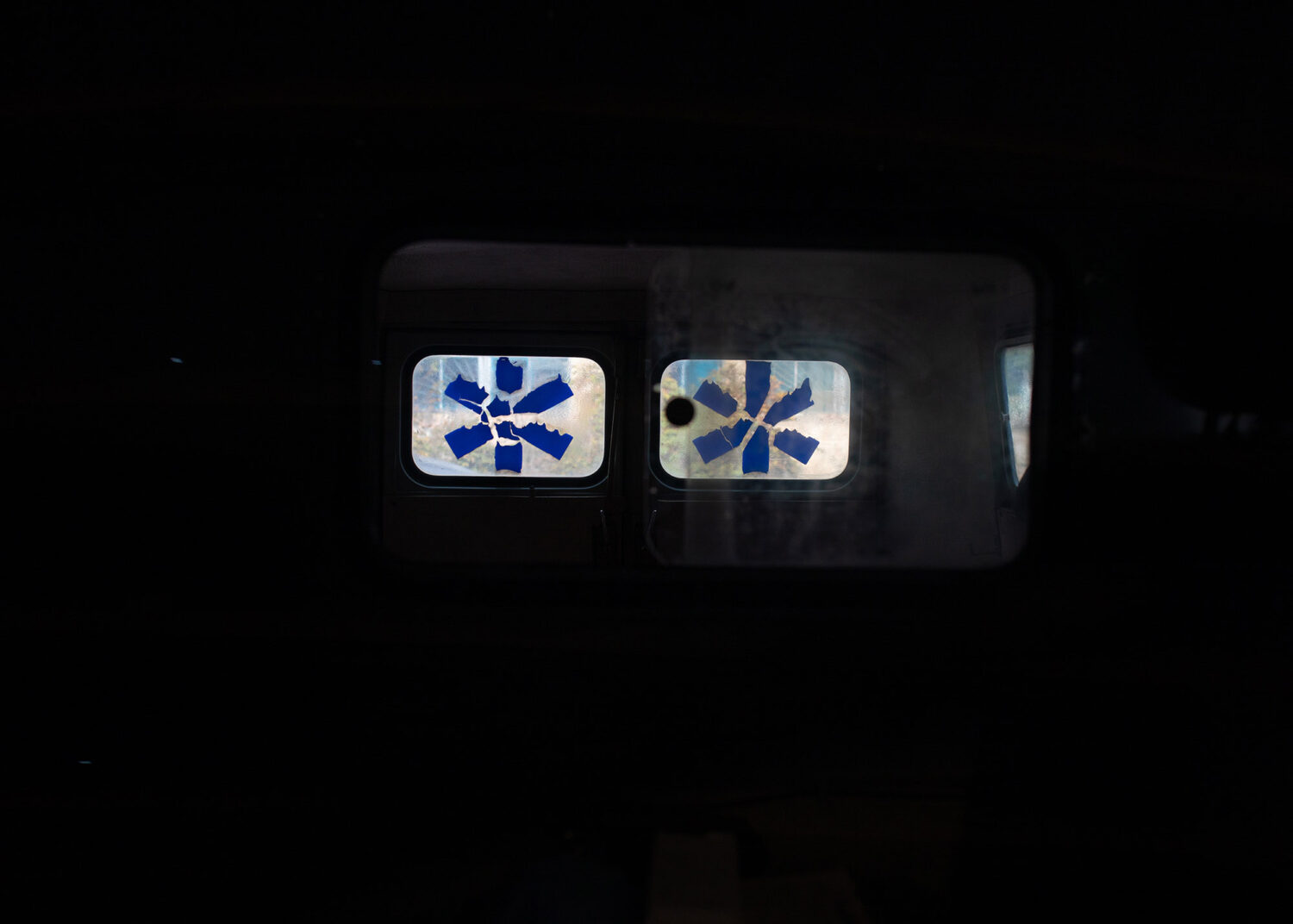
“And then bang! Here we are, the car bites the dust! We start fixing it in the middle of the road. Nobody wants to help. We are driving the wrecks,” Valerii comments on the video. “So the paramedic jacks up the car with a crowbar, while the driver goes under it, quickly twisting something with a tape he found in the ditch just to get to where we’re going.”
When the ambulance breaks down, over 10,000 people—residents of Shamraivka village and 19 other neighboring villages—can get no emergency help.
While we are watching the video about the ambulance, it suddenly appears on the horizon—the team is coming back after attending a patient. Valerii greets his colleagues who are on duty today: paramedics Nataliia and Oleksandr, and Yurii, their driver.
“Can’t offer you tea, since this place hasn’t had any electricity for a long time. There is some wiring problem,” the paramedics explain, inviting us to their resting room. “In the evening, we illuminate it with our phones or whatever.”
This premise used to be an outpatient clinic. Now it smells damp and old. It’s cold here, as if it were January. Heating has long been cut off. The walls are cracked.
“See, this is how we work. I don’t know how old the building is. Might be more than a hundred years old. It was built by Countess Oleksandra Bronytska ages ago. Yes, it’s damp here,” Valerii Korzun says. “People suffering from asthma are afraid to be on duty here. Because they get asthma attacks. We haven’t had a working bathroom for six months, so the guys, our drivers, fixed it themselves.”
While Valerii is giving us a tour around their “luxury” premises, Nataliia and Oleksandr take out a paramedic box and a defibrillator from their GAZelle.
“The capital committee visited our station. They checked the equipment,” Korzun says. “The defibrillator was checked first. Their technician looked at it and said it could not be used. This defibrillator can kill one—that’s what they wrote in the certificate. They handed it over to the Central District Station in Bila Tserkva for a replacement, but for some unknown reason, we got it back a week later.”
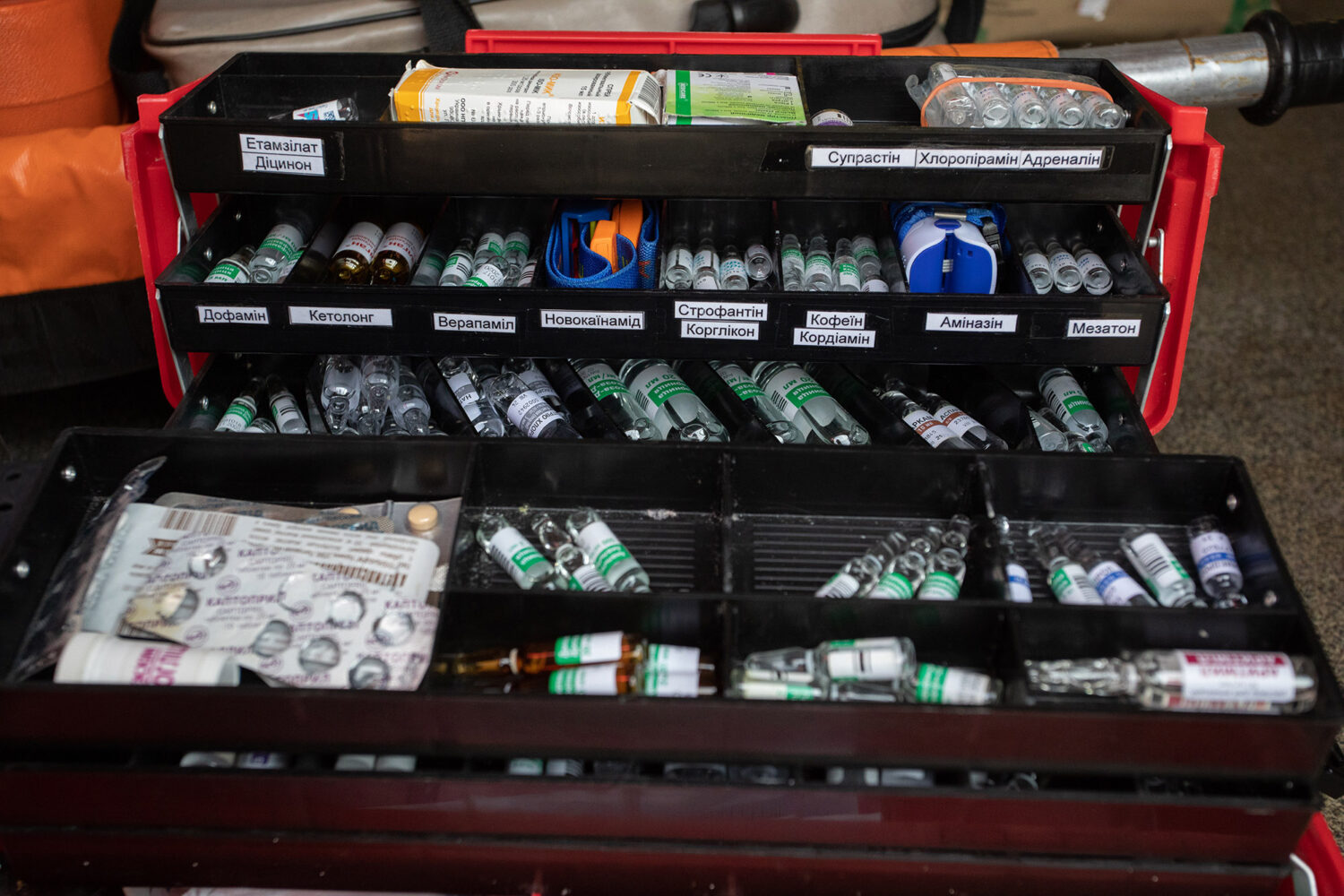
“People living in the two dozen local villages better not have any heart problems. There’s neither a shock nor injection to help them.”
“We don’t even have verapamil to restore heart rhythm. Nor any medical alcohol. There are no glucometers. It’s critical, because when we attend an emergency and a person is unconscious, we must first take a blood sugar test,” Olexandr Semeniuk, paramedic, explains. “We buy cotton wool at our own expense. The senior paramedic somehow gets peroxide. And pours it into bottles for us.”
Coronavirus related cases have recently added to the list of usual emergencies. I notice that protective face masks that paramedics wear do not have any clips and constantly get in their eyes.
“These are the masks we have been given,” Semeniuk sadly says.
“We also wash the car ourselves,” Valerii Korzun adds. “How should we disinfect it? Did anyone give us the agents for it? We don’t have anything! Disposable suits were not provided. Instead, they gave us reusable ones. And told to wash them ourselves.”
The emergency team gets another call. The side doors slam shut, the rear ones are not as reliable. Oleksandr has to hold them from the inside.
The old and rusty GAZelle jumps up and down the rural bad roads. The deafening noise inside makes the paramedic and I start shouting whenever we want to say something. I point to the taped hole above my head in the ceiling.
“It’s ventilation,” Oleksandr jokes.
Skvyra
In Shamraivka’s GAZelle, I thought I had seen everything. Yet, when I found myself in the next “ambulance”—from Skvyra district сenter for emergency medical services and disaster medicine—I realized that I was wrong. This “UAZ” off-roader will soon celebrate its 20th anniversary. We are bouncing in it with the paramedic, Maryna Martyniuk, while a cut plastic bottle is flying around under the ceiling.
“Wanna see how we put a patient on a drip?” Maryna asks “It’s handmade. The drop bottle is placed inside a plastic bottle. Before, we used to hold it in our hands. Now it hangs on like this. Another thing is whether it drops when we go off-road.”
Dirt, holes, rust. The ambulance stretcher does not roll out because it has no wheels.
“What if, for example, we have a car accident victim? And there are two of us. There is no room to stand, or attend to the patient, or put a patient on a drip,” the paramedic complains.
Same here as in the neighboring Shamraivka. The ambulance cars that paramedics are ashamed to go out of, lack of blood glucose test strips and some much-needed drugs. Physicians have repeatedly informed the chief officers about all these problems.
“We are ashamed that we don’t even have hydrogen peroxide,” says Ihor Khomych, a senior paramedic at Skvyra first aid station. “We write requests, but the items are out of stock. When we ask, they say: ‘Wait, supplies will arrive.’ So that’s how we live—waiting.”
The premises of the station comprise a control room, a kitchen and a resting room. I notice a pair of protective pants hanging on the door.
“What is that behind you?” I ask Maryna Martyniuk.
“It’s a suit we wear when the team attends coronavirus calls.”
“What is it doing here?”
“Drying.”
Reusable suits are washed in the washing machine right in the kitchen, next to the dining table and microwave.
“We wash them right here,” Maryna says, showing the place. “It is what it is. . .”
There is a single attendant in the first aid station—Svitlana—who washes the suits in the washing machine. She also cleans the ambulance cars after coronavirus emergencies.
“Do you have any equipment for professional disinfection?”
Svetlana is sighing heavily.
“Do you disinfect it yourself?”
“Yes. We are given disposable face masks and gloves. That’s how we go to disinfect the car.”
“How much do they pay you for this job?”
“Two thousand hryvnias ($70 — R.)—half pay.”
“How do you survive?”
“I have a side job. I sell newspapers. My mom helps me. She is 81 and retired. That’s how we survive.”
She bursts into tears.
Borodianka
At the Borodianka center for emergency medicine, a modern Peugeot ambulance immediately catches my eye. It’s parked in the garage. Its siren is covered in a spider web. On the dusty windshield, someone drew a cute smiley.
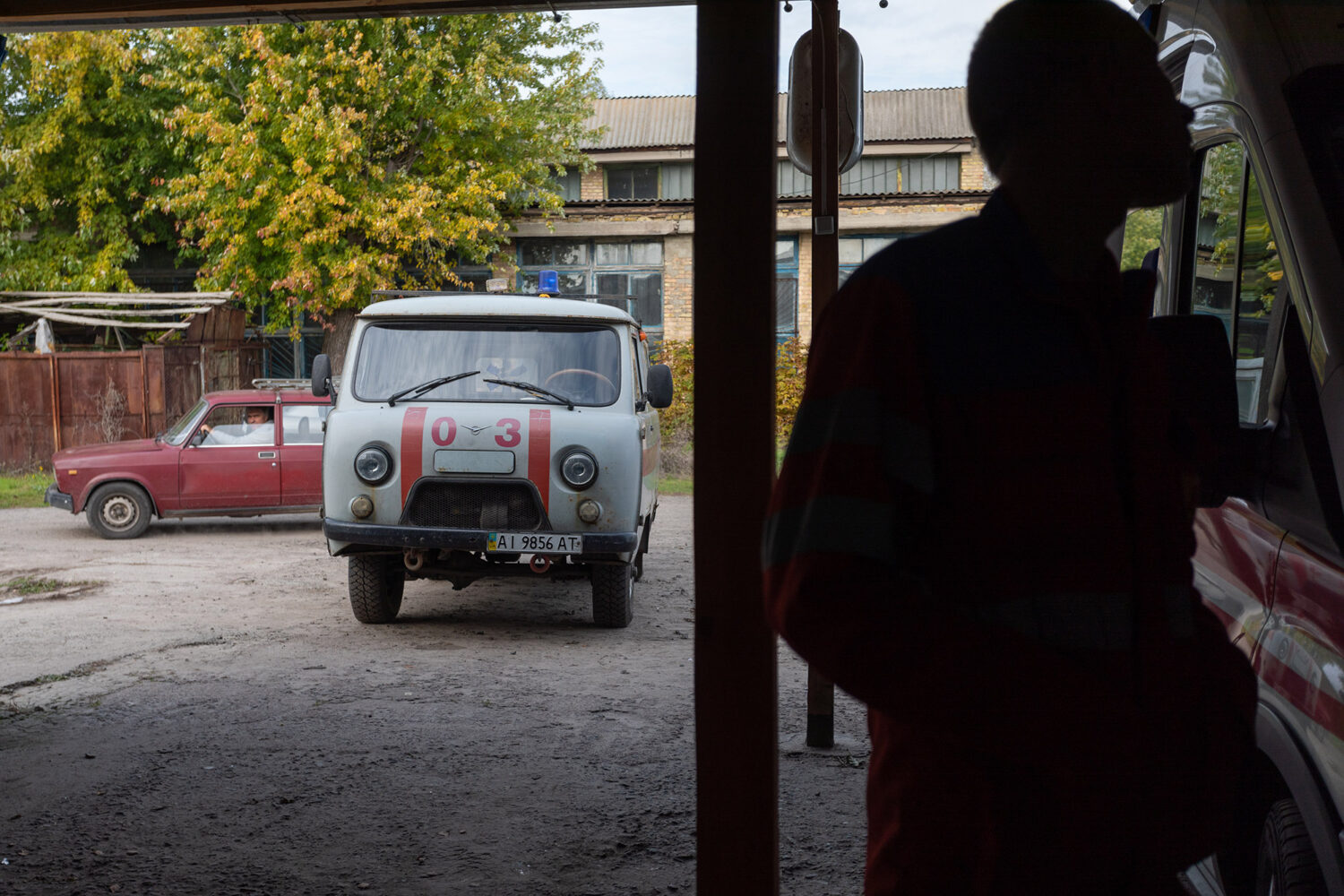
“It is a modern mobile ICU equipped with everything. It complies with category B. You can find all you need in it—oxygen, defibrillators, vacuum tires, vacuum mattresses, backboards for adults and children. But we can’t ride it,” says the paramedic Oleksandr Ihnatsevych.
The Peugeot’s engine broke down five months ago. No matter how many times the local paramedics asked the chief officers to get the “wheels” repaired, they still can’t come and pick it up. The medical teams have to attend emergency patients in an old UAZ looking like a pile of rusty scrap. On the windshield, there is an inscription—03. If you dial it, the call will fail.
“You may be better off never getting such emergency help,” Oleksandr says. “In this off-roader, patients can get injured even more as they are being taken to the ER. When we attend emergency calls, people get surprised: How can a car like this drive at all?”
“Yesterday, I explained to someone: Why don’t you speak up? If an emergency medical team arrives in a car like this—call, complain! Why such cars? As long as you say nothing, there won’t be any changes.”
Oleksandr opens the UAZ doors. There is no light inside. Except for the dirty, Soviet-era stretcher, which cannot be fixed down in any way, the cabin has no medical devices or equipment. The Borodianka first aid station is located next to the regional highway. From time to time, they have car accidents here. Nearby, there is an airfield, where people jump with a parachute. The most common emergency cases are complex spinal injuries.
“It’s a shame to attend these victims, understanding that we won’t be able to provide full assistance,” Oleksandr Ihnatsevych says. “For spinal injuries, we need to have special immobilization backboards, but we don’t have any. The stretcher must be firmly fixed down. But here, it looks like this,” he points. “We put the patient down, a paramedic sits in front and holds the stretcher by the handle so that, God forbid, the patient doesn’t fall out on our way to the ER.”
We saw with our own eyes how the twenty-year-old UAZ started only after the fourth attempt.
As we were getting in, the paramedic warned us to be careful, because the steps rusted and we could fall through. When the doors were closed, we saw a huge crack between them and the cabin floor. As we drive, the paramedic is covering the crack with his foot.
“See how airtight it is—as required for coronavirus cases? The steps are crooked and mended all over the place. Because of it, we usually take our patients inside on chairs—they may fall if they step on the steps. And by the way, when it rains, water from puddles splatters right in through that crack, making the patient wet.”
There are neither defibrillators nor oxygen tanks. The paramedics do not know how to hospitalize patients with low oxygen saturation and an acute need for oxygen support.
“We put our patients in a sitting position or lay them down and hospitalize at our own risk,” Oleksandr complains. “Medication is another story. Yesterday, we came to an emergency patient and said we had no antiarrhythmic medication to inject (in critical situations, it quickly stabilizes the heart rhythm). They ask: ‘How can it be possible? What kind of an ambulance is it?’”
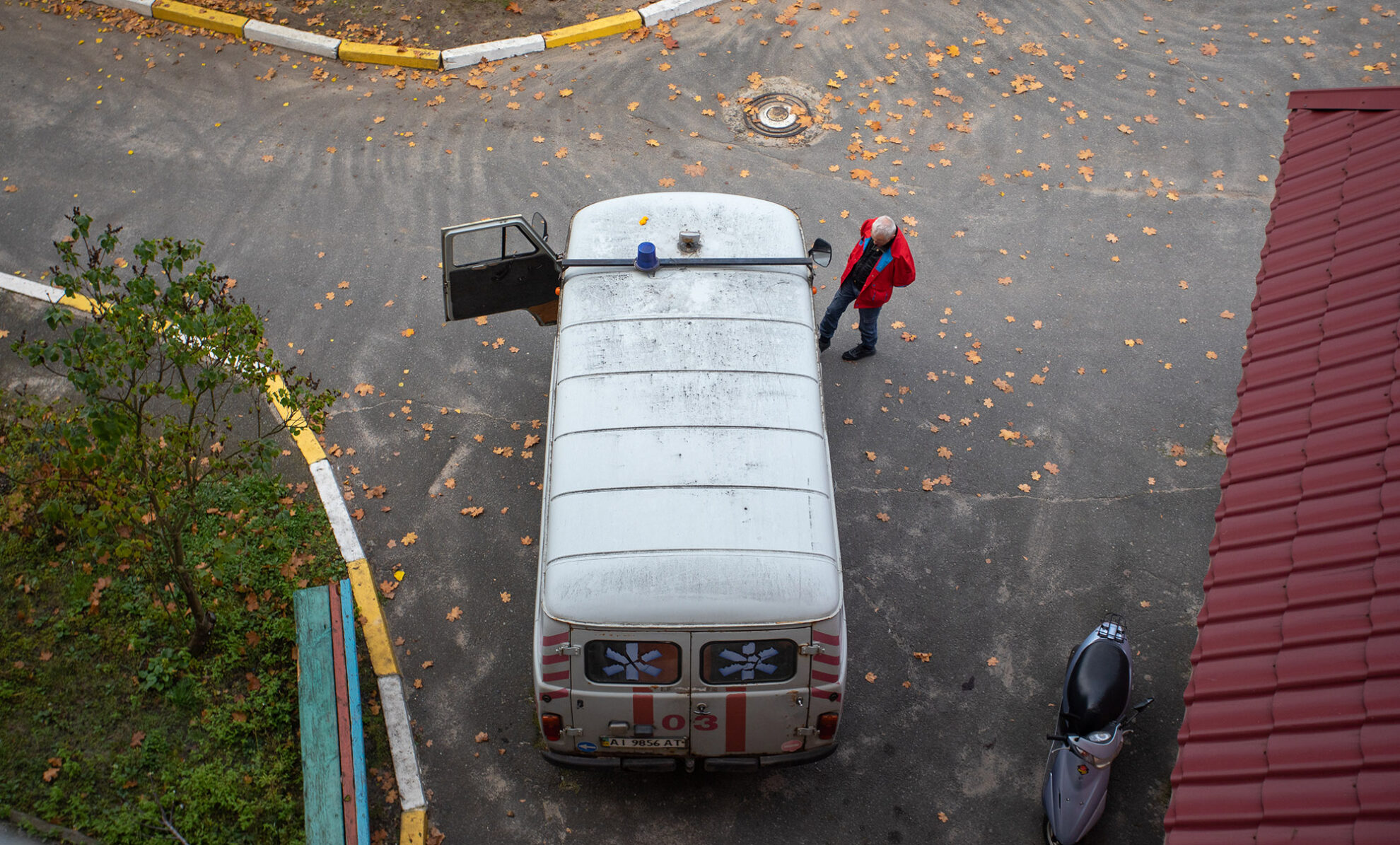
After a ten-minute ride in the Borodianka’s UAZ you get out of the ambulance feeling like you have just had three rides on a roller coaster.
At the first aid stations in Borodianka, Klavdiievo-Tarasovo, and Nemishaievo, there are four ambulance cars in service. Three old UAZ off-roaders and only one modern Ford mobile ICU. This fleet serves more than fifty thousand people.
A few weeks ago, the Minister of Health himself, Maksym Stepanov, visited the Borodianka station. The paramedics showed him how the UAZ was falling apart and told him that the modern Peugeot had not been repaired for six months.
“He arrived, saw this mobile ICU. His answer was the following: ‘By the end of this year, we want to replace 28 cars in Kyiv region, renew the entire fleet by 2022, and increase funding for emergency assistance.’ No details. Only waffle. . . We realized that we would keep riding the same UAZ as we did before.”
Have a Waffle
Oksana Mykolaivna Sharko is a young director. She has been managing the Kyiv Regional Center for Emergency Care and Disaster Medicine for nine months. Long enough to bear a child. Not long enough to have an ambulance repaired. Sharko is nice and friendly but appears to be nervous. At the beginning of our conversation, I showed her a video of Shamraivka’s paramedics tinkering about with their old GAZelle in the middle of the road.
“I have been working for less than ten months. For this period of time, you can’t make much changes to what has not been done for fifteen years. Did these cars wear out like that in just ten months?”
“I guess, it’s not much of an answer from a chief officer!”
“Procurement is currently underway. The Minister promised to provide 28 cars. I can’t replace all their cars right away—to do this, I would have to take them from someone else.”
Hearing about the killer-defibrillator from Shamraivka, Oksana Mykolaivna opens her eyes wide. She says she didn’t know about it. She promises to find out about this issue and the lack of oxygen tanks in the ambulances. But the question about the lack of medicines evokes a sarcastic smile to her face.
“For the time being, we have everything we need, including drugs to provide emergency medical help,” the director’s voice grows louder.
“There is no medical alcohol, paramedics say.”
“Alcohol is not a medicine. They can use chlorhexidine instead.”
“There is no peroxide.”
“Use chlorhexidine instead.”
“There is no verapamil. There is no antiarrhythmic medicine.”
“The first aid stations currently have all the drugs. If paramedics didn’t get the drugs, it doesn’t mean we don’t have them in stock. So let’s clarify this issue, as well.”
Hearing about the troubles that Borodianka’s paramedics are having, the director changes her tone of voice from proud-victorious to guilty-gentle.
“Why do they ride a rusty UAZ, while a modern mobile ICU is parked in the garage due to the engine that hasn’t been fixed for five months?”
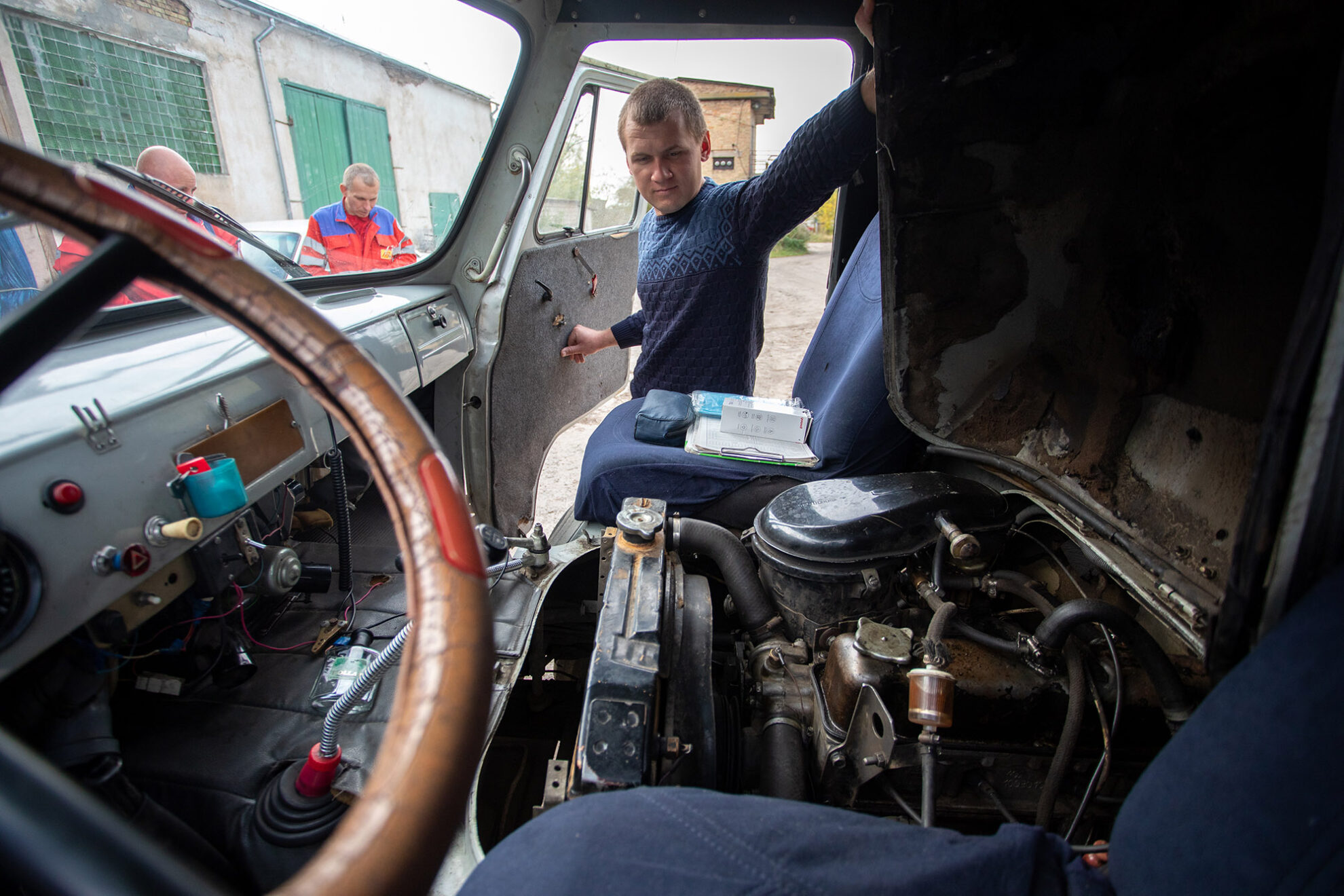
“We can’t just take it to a service station and have it fixed. There must be a tender procurement procedure applied. There were no bids on repairs—more than once. To take that mobile ICU to the service station, we had to either wait for the bids, or pay out of our own pocket. Last week we finally signed the contract, so we’ll have it fixed shortly.”
Following our conversation with Oksana Mykolaivna, we had a call from Shamraivka’s paramedic: glucometers were delivered, the “vintage” GAZelle was replaced with a slightly newer one.
Service Certificate
“We understand the current situation in our country. We are ready to work overtime. We just want a little more attention, respect for our profession and our job,” the paramedics working at the Nemishaievo station say, taking me through the woods to the garages. There is a resting room for the ambulance drivers there.
The green door has a big warehouse lock on it. The driver—Uncle Vitia, as he introduced himself—is in his sixties. He easily unlocks the door and takes our team through the garage—dirt, dampness and darkness.
Behind the garage, there is a dark corridor littered with some rubbish. The conditions everywhere are unsanitary. Following the corridor, we finally enter the resting room.
It’s one square meter.
In fact, a Soviet-era sofa makes up the entire resting room. The rags covering the rusty battery so as not to get burned in the winter date back to the Soviet times, too. Four corners—four spiders. Dampness, mold and stink coming from the garage and corridor have gobbled up this tiny resting area.
There is a small TV. Though we did not ask Uncle Vitia if it worked.
There is a service certificate on the wall next to the light switch. It was issued by the Emergency Care Administration in gratitude for many years of Uncle Vitia’s hard work, wishing him inspiration for future accomplishments, and victories in his job and life.
“It was a long time ago,” Uncle Vitia says glumly. “These days, nobody congratulates us on anything.”
Before leaving, I notice how Uncle Vitia skillfully closes the back door of his ambulance.
With his foot.
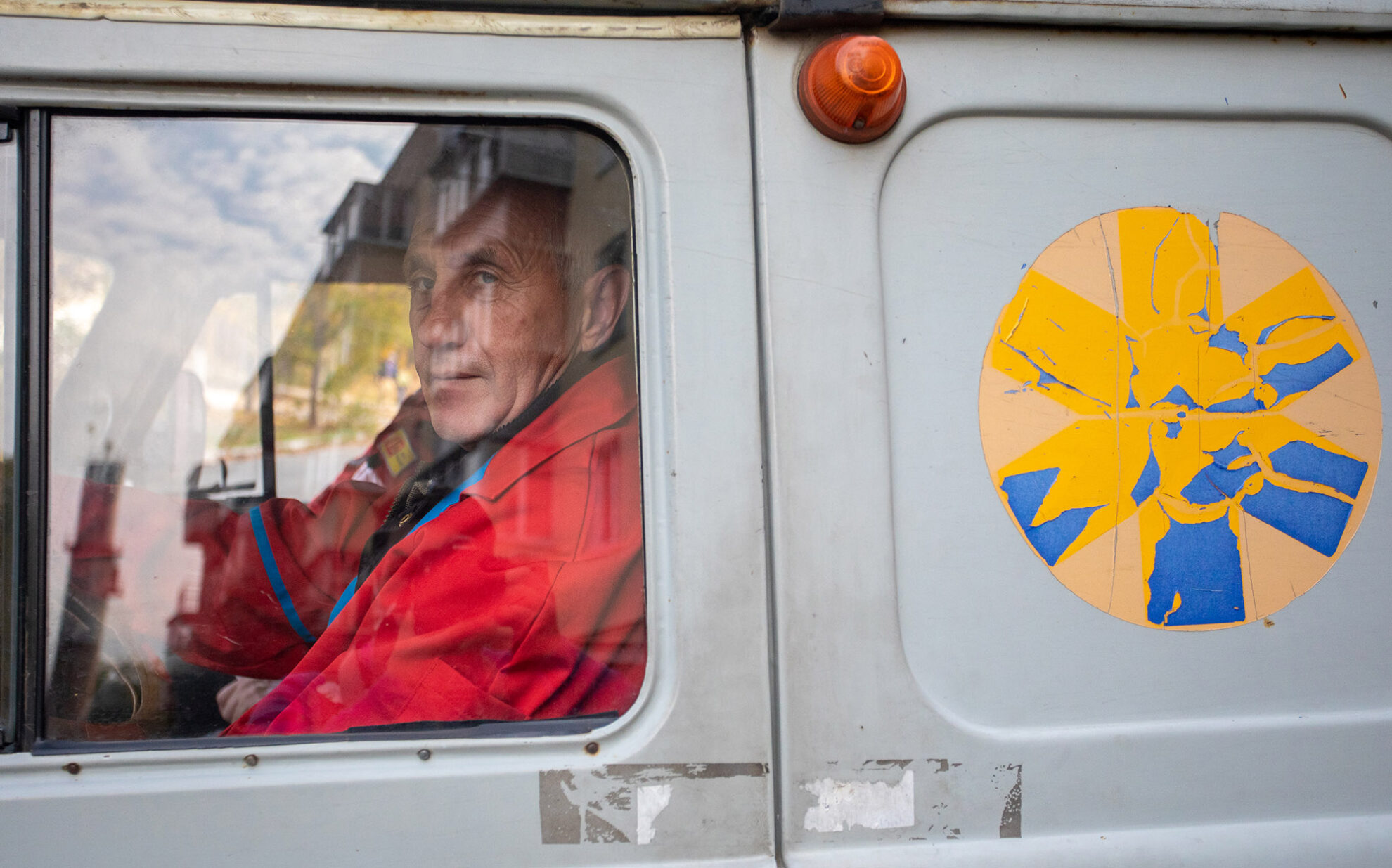
He explains that it is not because he despises his work or treats the team assets carelessly. The reason is that the back door of Uncle Vitia’s “vintage” mobile ICU swings open at all turns and can be closed only in this way.
With his foot.
“Thanks to our drivers, who can fix and weld anything, this rusty bone-shaker still drives. If not for them, we wouldn’t have even this one,” the paramedic Oleksandra Romanenko says, hugging Uncle Vitia.
Suddenly, we hear a signal from the tablet.
“Uncle Vitia, start up! We have an emergency.”
[This publication was created with support of the Royal Norwegian Embassy in Ukraine. The views and opinions expressed in this publication are those of the authors and do not necessarily reflect the official position of the Norwegian government.]
Have read to the end! What's next?
Next is a small request.
Building media in Ukraine is not an easy task. It requires special experience, knowledge and special resources. Literary reportage is also one of the most expensive genres of journalism. That's why we need your support.
We have no investors or "friendly politicians" - we’ve always been independent. The only dependence we would like to have is dependence on educated and caring readers. We invite you to support us on Patreon, so we could create more valuable things with your help.
Reports130
More